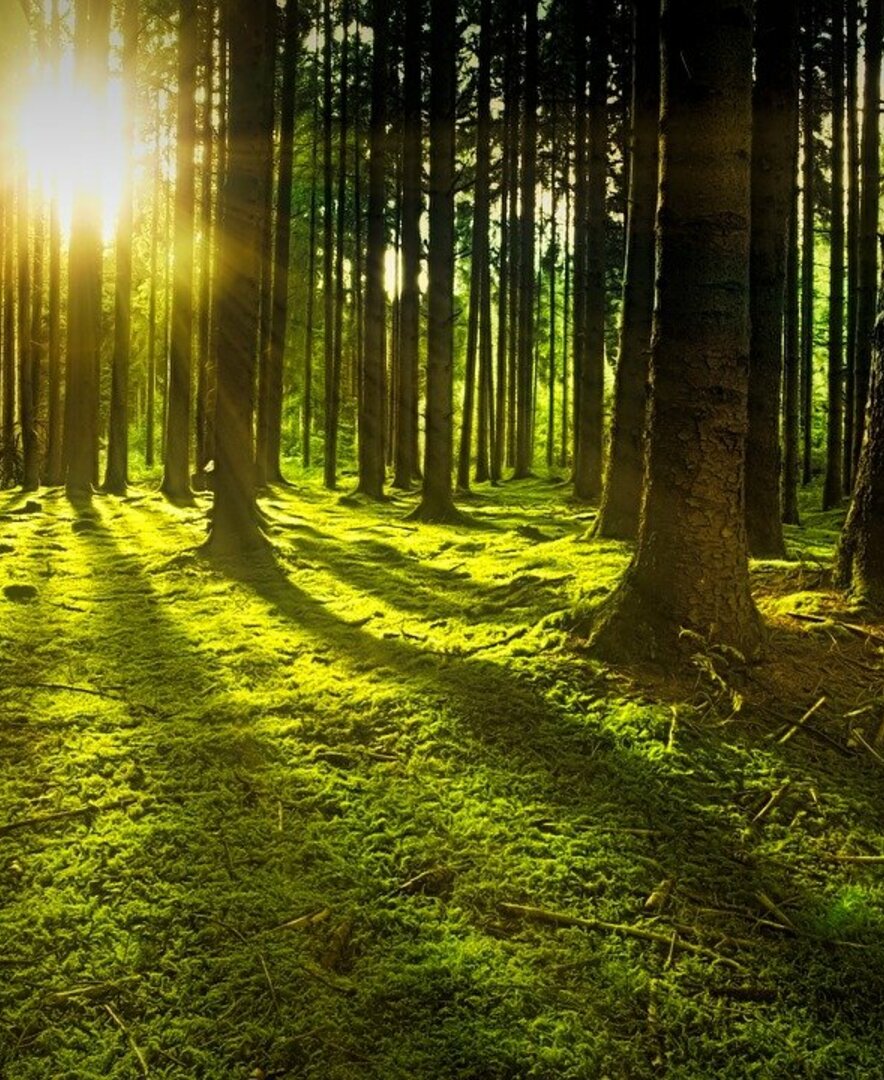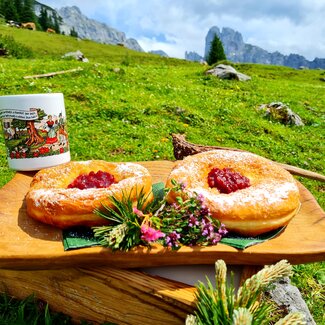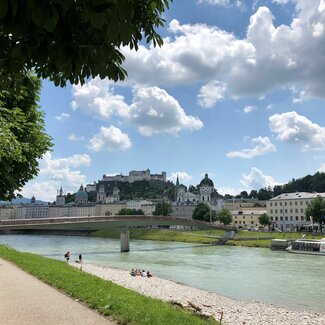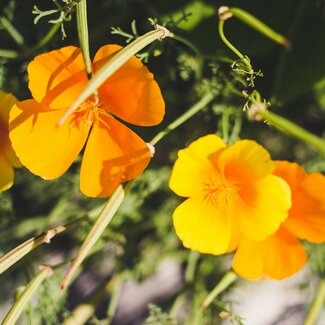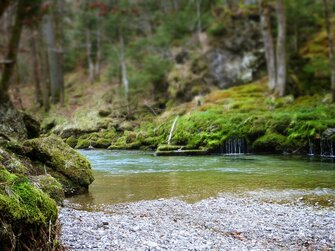
Feeling Blue? Touch Green!
Is nature the best medicine for body and mind? How much does it improve our well-being? What are the benefits of forest bathing? An experiment. Three attempts. Ten lessons.
Are you serious? I’m supposed to try forest bathing and write about my experiences? What a heck of a mission! Well, honestly, I’ve always taken forest bathing not quite seriously. I’ve looked at it with a condescending smile from the high horse of a fit and outdoorsy person. I’ve regarded it as a relaxation technique for dreamy heads who hug trees in their spare time. Perhaps it’s just my alarm bells that start to ring whenever I see signs of esotericism. Where other people hug trees and feel the energy flowing, I just feel the bark. As for me, rationality always trumps spirituality.
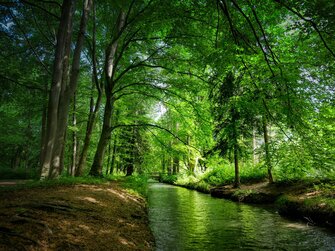
Wanted: A Breather Replacing the Fast Forward Button
On the other hand, I’d be well advised to declutter my mind at least a little bit. I sometimes feel like a post box filled to the brim. Has someone forgot to order a change of address? And each day, I keep cramming more information into my head. Everything’s constantly increasing. Except the time for myself. Even when I take some time off from work, my life is put on fast forward, not on pause. After all, I don’t want to miss out on anything. That’s certainly not healthy. Perhaps it helps to take a breather? Spend more time in nature? Both? Forest bathing even? It might be a way to get out of this rat race, the endless pursuit of milestones, deadlines and bucket lists which leaves no time for a break. An exit strategy to escape the nerve-racking and never-ending “pling”, the sound of new e-mails in my inbox. After all, forest bathing is supposed to be a fountain of youth for body and mind. A place where people lacking in energy can recharge their batteries. It sounds impressively simple: Go into the forest and immerse yourself in nature with all your senses. So, is it merely a new term for a random walk in the woods? No, it’s not. Forest bathing aims at intensifying the specific healing qualities of the forest. The toolbox includes easy exercises for breathing, meditation, mindfulness, sensory perception training and creativity. By the way, the Japanese are at the forefront when it comes to forest bathing or “shinrin-yoku”, as they call it. They quickly embraced this form of ecotherapy, being convinced that time spent immersed in nature benefits health, relaxation and overall wellbeing. Rightly so? I’m still wondering. It’s actually hard to tell. Trying to grasp the current state of research into forest bathing is as difficult as finding the shortest way out of a Swedish furniture retailer.

Nature: A Broad-Spectrum Remedy
- Lesson #1
If you’re not in the know, ask somebody who is. Arnulf Hartl, for example. Arnulf Hartl works at the Paracelsus Medical University in Salzburg. He conducts research on the impacts of nature on our physical and mental health. “Yes”, he confirms. “Spending time in nature is good for our health, as a preventive measure as well as in case of illness.” It can boost the immune system, strengthen the cardiovascular system and improve the pulmonary function. It contributes to our physical wellbeing, reducing blood pressure and blood sugar levels and alleviating stress, allergies and asthma. “From a scientific perspective, there is strong evidence for these benefits”, Hartl says. “Especially, if you’re getting active in nature. The more we exercise, the healthier we are. Being physically active outdoors, in nature, is even more beneficial. That’s the best thing you can do, really.”
It’s not only good for physical, but also for mental wellbeing. “Our mood improves if we spend time outside”, Hartl explains. “Nature lovers generally lead a happier life.” What’s surprising: It already has a positive effect to look forward to going outside, to look at nature scenes. That’s probably why we hang nature images in our living rooms, put pot plants in our offices, book a room with sea view when we go on holiday.
- Lesson #2
Nature is a great environment for getting some exercise, it’s an antidepressant and an effective remedy. Free of charge, quickly accessible and available irrespective of health insurance services.
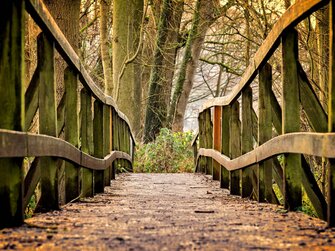
Forest Bathing: Barking Up the Wrong Tree?
What about forest bathing? “There’s no scientific evidence, at least in Europe”, Arnulf Hartl lowers expectations. A lot of research on forest bathing has been conducted in East Asia. In some cases, the studies do not meet the criteria of science. In other cases, there is doubt if the conclusions drawn in studies focusing on tropical coastal forests can be transferred to other settings, e.g. our forests in Central Europe. Obviously, there’s (still) little evidence. So, what next? Am I barking up the wrong tree with my intention to bathe in the woods?
- Lesson #3
If there’s nothing more you can learn about it in theory, you should have a go yourself. Let’s put forest bathing to the test.
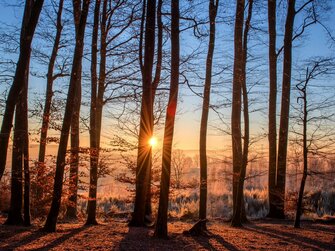
First Attempt: It’s Rather Difficult to Think of Nothing
No sooner said than done. I’m lying under a canopy of leaves. But something’s different today - I’m only here to relax. No hiking. No cycling. No running. My goal is to clear my mind and to take in the natural surroundings using all of my senses. What could possibly be more relaxing than simply lying on the forest floor?
Two hours later, I’ve learned two things.
- Lesson #4
Take your forest bath off the beaten tracks. Apparently, lying in the forest without an obvious purpose is irritating for those who pass by. If I was running through the woods in bright coloured running gear, puffing and panting, as red as a beetroot, nobody would bother turning round. Well, it says a lot about our society, our attitude towards performance and relaxation.
- Lesson #5
It’s rather hard to put your thoughts on a diet. There are just so many distractions. I see familiar shapes in the clouds above my head. I hear jays giving harsh, rasping screeches. But the hardest thing of all is trying to turn off the pictures in my head. At work, we’ve been trained to think of several things at once for such a long time. As a consequence, it’s almost impossible for us to think of nothing.
My conclusion:
Forest bathing seems to be more difficult than I thought. That makes me think of lesson #6: Perhaps, I bit off more than I could chew for my first time forest bathing. There’s no such thing as instant relaxation. I arguably have to be a bit more patient. Or am I doing something wrong?
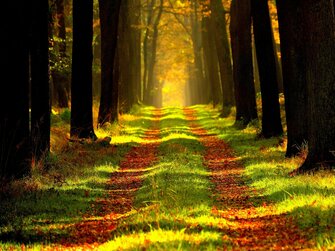
Do I Need a Forest Therapy Guide for Forest Bathing?
“Not necessarily”, Ulli Felber says. She’s a forest therapy guide and author from Styria. “Some people try forest bathing and quickly feel at ease. Others need a bit more time. By the way, you’re not obliged to sit still. Those who have a hard time slowing down and focusing on the present moment can combine forest bathing with physical activity.”
Well, what’s the point of a forest therapy guide, then? “A forest therapy guide helps you to immerse yourself even better in the forest atmosphere”, Ulli Felber explains. “Forest bathing offers a set of different exercises. A guide can help you find those that suit you best. Ask yourself what you’re doing it for: Would you simply like to relax and let go of your thoughts? Would you like to improve your health?” Despite slight differences, all of the exercises aim at slowing down, being in the present moment and immersing your senses in the sights and sounds of the natural setting. “Perhaps, your forest bathing experience would have been better if you had a guide inspiring you”, Ulli thinks. “However, forest bathing is a rather new trend. Therefore, the term is not protected yet. This means that basically everyone can hold seminars. Thus, it’s worth having a close look at the organisers. Check if they have the relevant qualification”, she adds.
Ulli Felber is absolutely convinced that forest bathing has a positive impact on our wellbeing. Is that an esoteric idea? In order to dispel those doubts in the first place, she points out that the scientific foundations of forest bathing are about to become “gold standard”. She pins her hopes on a large-scale study which will be conducted at the university hospital “Charité” in Berlin in 2021. The study is carried out by Dr Andreas Michalsen and involves 600 participants. Its aims: First, finding out more about the healing powers of activities in nature, activities that are not primarily about physical exercise. Second, outlining an efficient method for forest bathing in Central Europe.
My impression after our conversation: This is a self-confident woman who believes in what she’s doing. And she has both feet on the ground. An esotericist? A tree hugger? Not at all. This is my lesson #7. Lesson #8: You don’t need to stop and stand stock-still while you’re forest bathing.

Second Attempt: Exercises Can Help Letting Go
So, I’m in the forest again. This time, I’m doing special forest bathing exercises. I’m walking barefoot over moss and spruce needles. I’m taking in my surroundings using all of my senses. I’m feeling the forest floor I’m walking on. Breathing exercises help me to calm down as I’m wandering underneath the treetops. And then, as I’m creating a mandala from natural materials on a forest glade, it’s happening. For the first time, I’m letting go. I’m in the present moment. I’m getting so absorbed in what I’m doing that I’m unaware of things happening around me. Like a child playing. There’s no purpose in what I’m doing but there doesn’t need to be one. I admit, I haven’t fully immersed myself in the forest bathing experience but it definitely feels better than before. There you go! It works!
Lesson #9
Apparently, I’m the type of person who can take a break more easily if there’s an activity involved. Try to let things happen naturally. Don’t expect anything.
Third Attempt: It’s Not the Label That Counts
The next day, I’m taking a break from forest bathing. I’m out and about again but this time my main emphasis is a nice workout. I’m hiking in the mountains. That’s one of my favourite outdoor activities. Everything’s familiar: The sun is shining, the cowbells are ringing, the forest smells of resin, the mountain stream is burbling. And there we go! Seemingly effortless, I’m reaching the state of mind that I’ve been longing for during my forest bathing sessions. It only takes a few steps and I’m in the zone. My brain’s on standby mode almost instantly. Still, my sensors are sensitive, my senses are sharp. But it’s more of an unconscious process. It doesn’t disturb me. I don’t get distracted by minor details. And the best thing is: Inspiring thoughts keep coming up. They simply do - without me thinking about anything intentionally. I’ve got no idea why it works, but it works. Maybe it’s because I’ve already practised this relaxation technique for a while.
I have a curious feeling that the most important lesson of all (#10) is actually quite simple: Take this medicine called “nature” as you like. Take it as you’re walking, sitting, lying, meditating or reading. Get some exercise or bathe in the forest. Call it as you like. Join a trained guide or go alone. Just go outside. Virtually every minute you spend in nature is good for you. That seems to be an undisputed fact.
